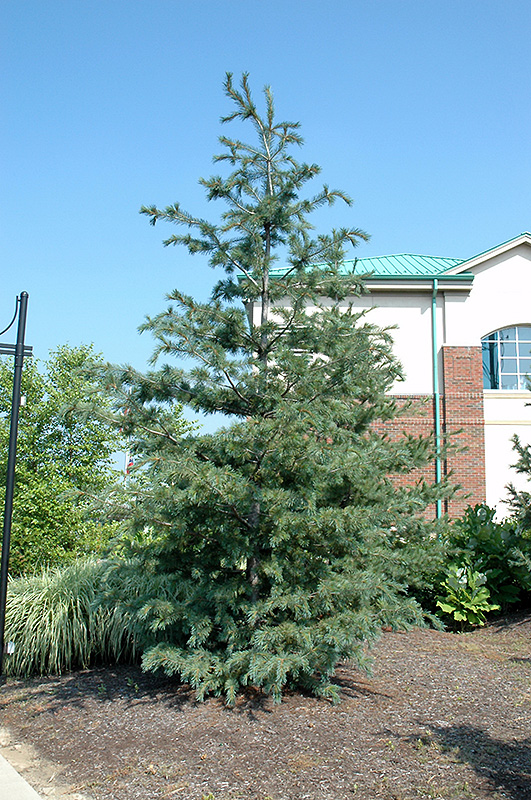Height: 60 feet Spread: 25 feet
Sunlight:
Hardiness Zone: 7 Other Names: Mexican White Pine, Chihuahua White Pine Description: A tall, narrowly pyramidal evergreen that becomes more rounded and irregular with age; open and airy branches displaying long, soft needles; excellent for a large landscape Ornamental Features Southwestern White Pine is primarily valued in the landscape for its distinctively pyramidal habit of growth. It has grayish green evergreen foliage. The needles remain grayish green throughout the winter. The rough dark gray bark adds an interesting dimension to the landscape. Landscape Attributes Southwestern White Pine is an open evergreen tree with a strong central leader and a distinctive and refined pyramidal form. Its average texture blends into the landscape, but can be balanced by one or two finer or coarser trees or shrubs for an effective composition. This is a relatively low maintenance tree. When pruning is necessary, it is recommended to only trim back the new growth of the current season, other than to remove any dieback. It has no significant negative characteristics. Southwestern White Pine is recommended for the following landscape applications; Planting & Growing Southwestern White Pine will grow to be about 60 feet tall at maturity, with a spread of 25 feet. It has a low canopy with a typical clearance of 1 foot from the ground, and should not be planted underneath power lines. It grows at a slow rate, and under ideal conditions can be expected to live to a ripe old age of 100 years or more; think of this as a heritage tree for future generations! This tree should only be grown in full sunlight. It prefers dry to average moisture levels with very well-drained soil, and will often die in standing water. It is considered to be drought-tolerant, and thus makes an ideal choice for xeriscaping or the moisture-conserving landscape. It is not particular as to soil type or pH. It is highly tolerant of urban pollution and will even thrive in inner city environments. This species is native to parts of North America.![]()
![]()
![]()
![]()
![]()
![]()
![]()
![]()
Characteristics
Applications
Ornamental Features
This guide is an online resource representing many of the varieties that we carry over the course of the season, and is intended for informational purposes only. Inventory varies seasonally, so we cannot guarantee that every plant will be in stock at all times - please contact the store directly for current availability. It does not include our entire selection of plants, so be sure to visit our store to see varieties that may not be represented on this list.


